By Rick VanSickle
The photo below just kills me. It’s a bright light from the shadows of uncertainty in these times that speaks to the personality of the winemaker who made the wine he is so preciously holding.
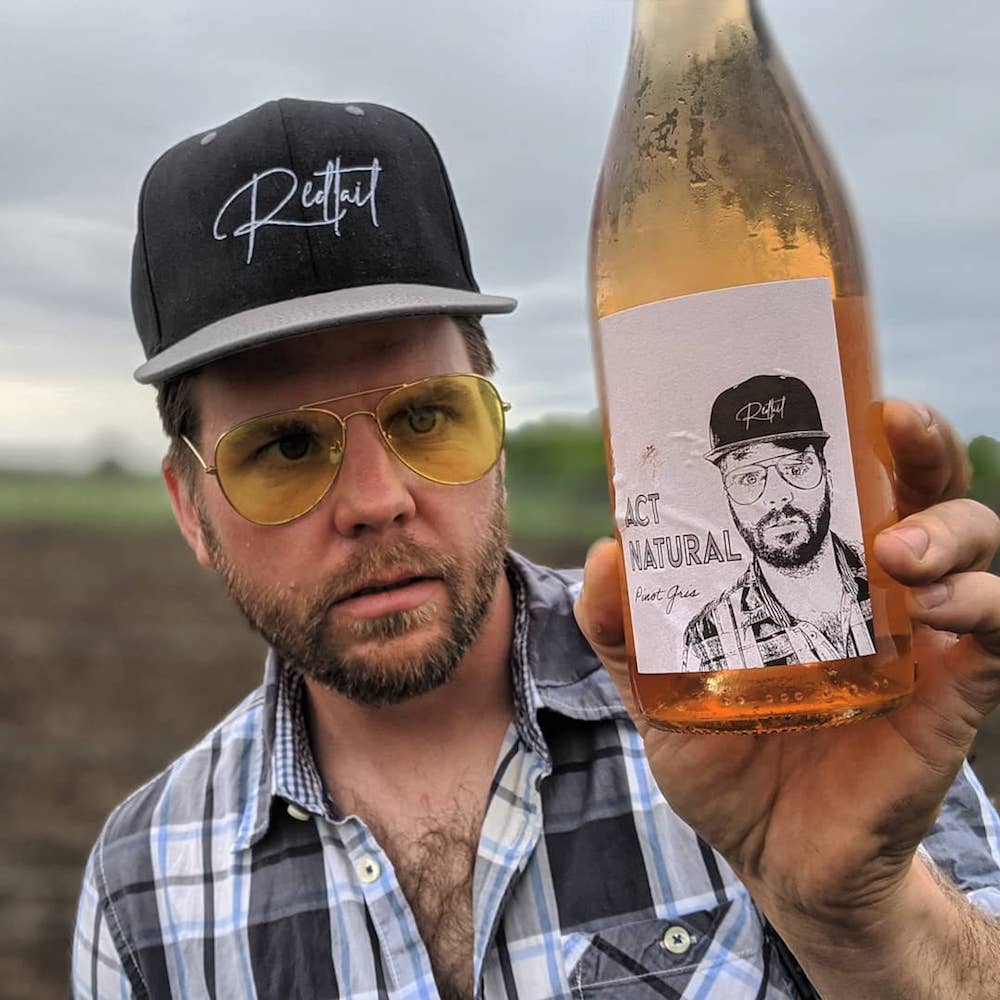
The Act Natural bottle that new Redtail Vineyards winemaker Lee Baker is holding is evocative and self-deprecating, a refreshing approach that tells me a lot about the wine and the maker without even tasting it. You get a sense of the direction Baker is going to take with the wines he intends to make at Redtail. And it’s all good. He, like so many talented winemakers in the exciting region of Prince Edward County, is forging a new path with that giddyup-and-go attitude of invincibility that has no boundaries and very few rules.
This song is blaring on my Sonos speaker as I write this (coincidentally from an album called Naturally by JJ Cale) on the front porch:
Clyde plays electric bass
Plays it with finesse and grace
Sit on the porch without no shoes
A-picking the bass and singing the blues
Get a taste below:
… He don’t move, he don’t flinch
Clyde, he don’t move an inch
Just sit on the porch without no shoes
Picking his bass and singing the blues
It’s porch-sitting music and it goes with porch-sitting wine, of which Baker has recently bottled with much aplomb and pride. Joyous, unpretentious wines made with passion by joyous people and filling a gap until the winery he has recently signed on with can tap into their own County fruit and right the ship.
Ten years after Redtail first opened its doors, Baker is giving it a whole new beginning. The original vineyard was modelled after high density European sites, with narrow row spacing designed for a horse and plough. The wines were made in a natural style, with low-intervention and sustainable principles carried from the vineyard to the cellar. But by 2018, the vineyard had fallen into disrepair. It was sold to Thomas Stallinga, a Dutch investor looking to develop a winery in PEC. He brought on vineyard consultants to assess the damage, and was heartbroken to find less than a quarter of the vines were alive.
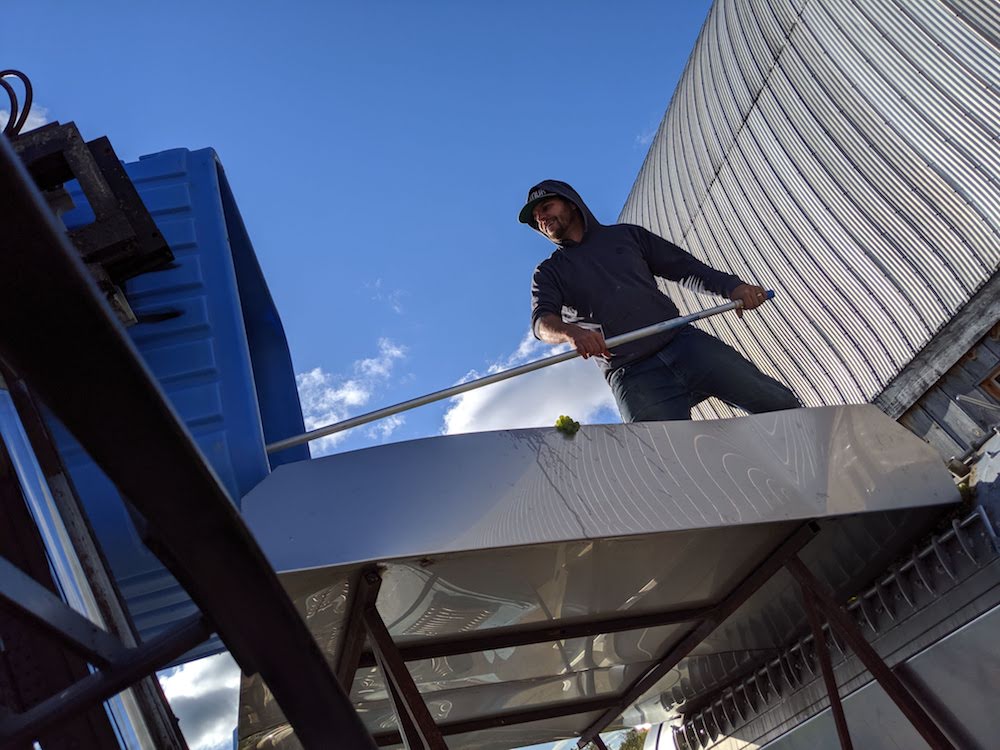
Thomas turned to Baker, a local winemaker with firsthand cold climate viticulture experience and a passion for natural winemaking, to come up with a plan to rehabilitate what was left would have been risky.
Baker made the difficult decision to pull the existing vines out, install drainage where needed, and replant the vineyards with wider row spacing to allow for safe tractor passage. The new vineyards will be Baker’s first chance to build the foundation for his wines from the ground up. His experience at a multitude of different wineries across three Canadian wine regions has taught him lessons about how to do it right, and — more importantly — how to improve.
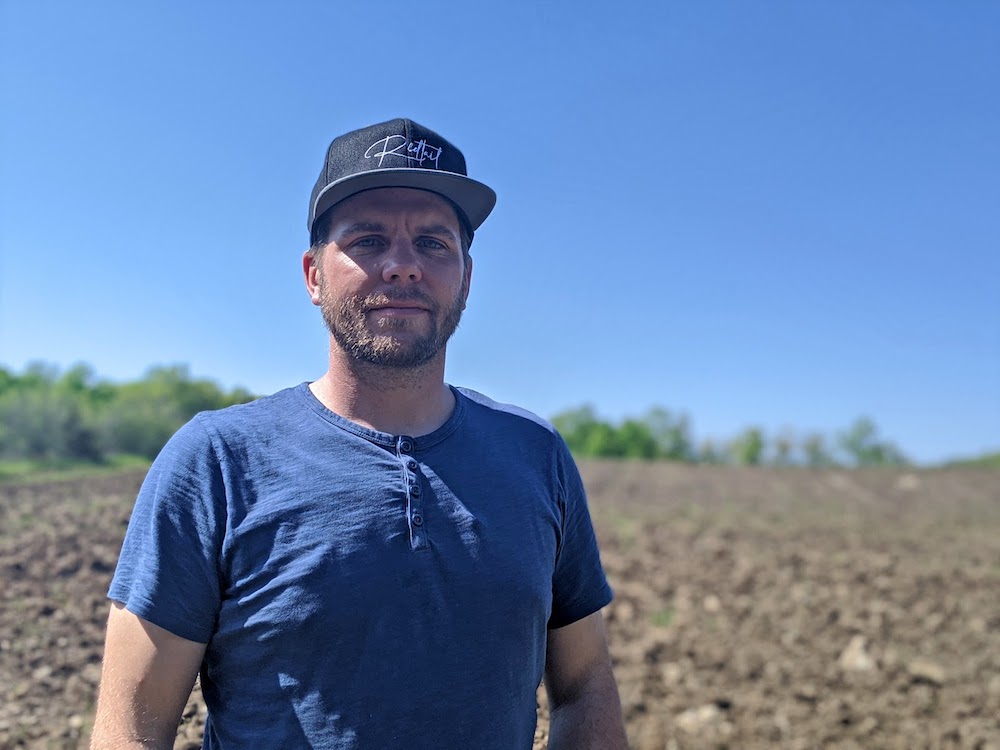
For now, Baker is working with what he has. No vineyards meant no fruit to harvest, and the current winery’s ongoing upgrades meant there was no place to process it even if he could find it. Redtail still had wines in the bottle from their previous winemaking consultant, but to be a winemaker with no wine felt wrong.
He went on a mission to source fruit for 2019, calling on old friends and colleagues from his days in the Niagara wine industry to share the love. In what has been a difficult growing year for grapes, he was able to find Pinot Noir, Chardonnay, Pinot Gris, and Gamay — varietals that would one day grow in the Redtail vineyard. He found a temporary home at Hinterland Wine Company, working with winemaker Jonas Newman to share production equipment and cellar space.
After tasting four spring wine releases from winemaker/viticulturist Baker, all sourced from Niagara vineyards, I followed up with a Q&A to get a feel for what Baker has in mind for Redtail in the short term and the long game.
Q&A with Lee Baker
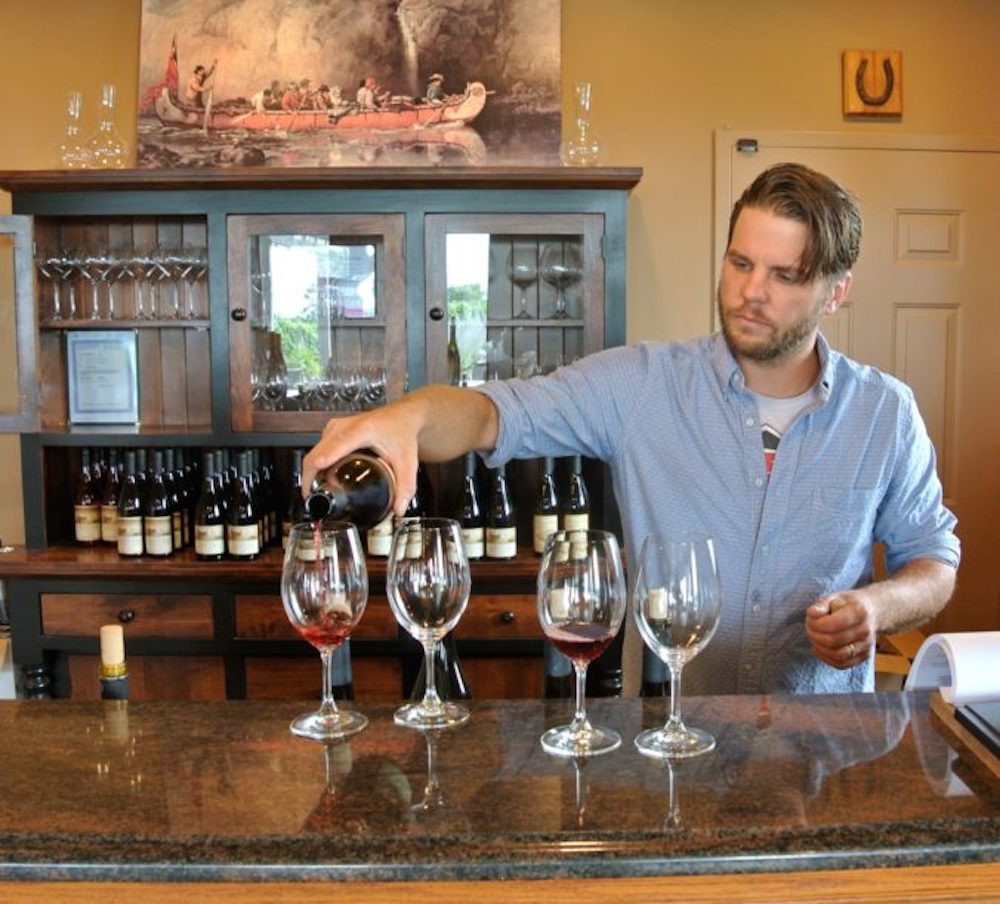
Wines In Niagara: We last we met, you were pouring some pretty nice juice you made at another Prince Edward County winery, Keint-He. What attracted you to pick up and move on to Redtail?
Lee Baker: My position at Keint-He was my first opportunity to work as a head winemaker. I had learned more about grape growing and winemaking in the three vintages I worked there than any other period in my career. I am incredibly proud of the vineyards I helped to maintain and the wines that I made there. The decision to leave was a hard one for me to make.
I was approached by the team at Redtail and offered an opportunity to help build a company from the ground up. Keint-he had been established for a number of years by the time I got there, and already had a culture set in place. I really admire their commitment to sticking to their philosophy, but this was an opportunity to design three vineyards, a production facility, and a portfolio from scratch. Not only that but have a major influence on the company culture and brand identity. It’s a young winemaker’s dream!
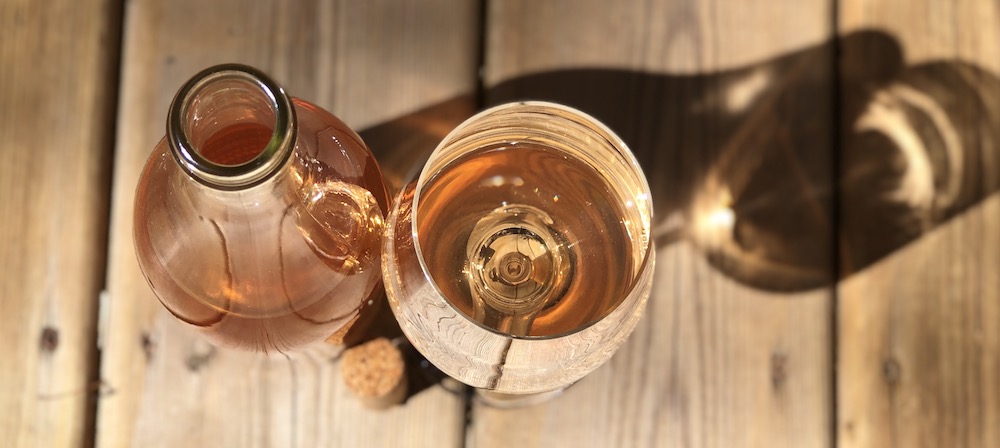
WIN: The four wines I tasted were all low intervention wines (two natural) and all from sourced fruit in Niagara. Are we getting a preview of the kind of wines you want to make at Redtail? What is the plan down the road in terms of using PEC fruit?
Baker: The grapes were all sourced in Niagara due to necessity. We learned early last year that the small vineyard on location was not healthy and made the tough choice to rip out the three-acre, high-density planting. Fruit in Prince Edward County is hard to come by and can be tremendously expensive. I was born and raised in St. Catharines, went to Brock University, and worked for nearly a decade in Niagara. Because of these roots, I was able to source some amazing fruit to produce very expressive wines that are accessible to most wine drinkers.
I guess you could consider the 2019 Pinot Gris and 2019 Gamay Rosé as low intervention wines. If that’s the case I guess you could describe me as being a low interventionist winemaker. Maybe you can tell I’m reluctant to use the phrase, but it’s only because I want to be completely transparent about what goes into my wines. I did use cultured yeast, temperature control, sulphur, a fining agent, and filtration on both of those wines. I tend to not add anything other than that to my wines in general. I don’t add tannin or other flavour and aromatic “enhancers.” I try not to chaptalize and I don’t think I have ever purchased a malo culture yet. That being said, we describe these two wines in-house as being “conventional.” They express more pure fruit and have the expected varietal typicity. This is as close to convention as I will get.
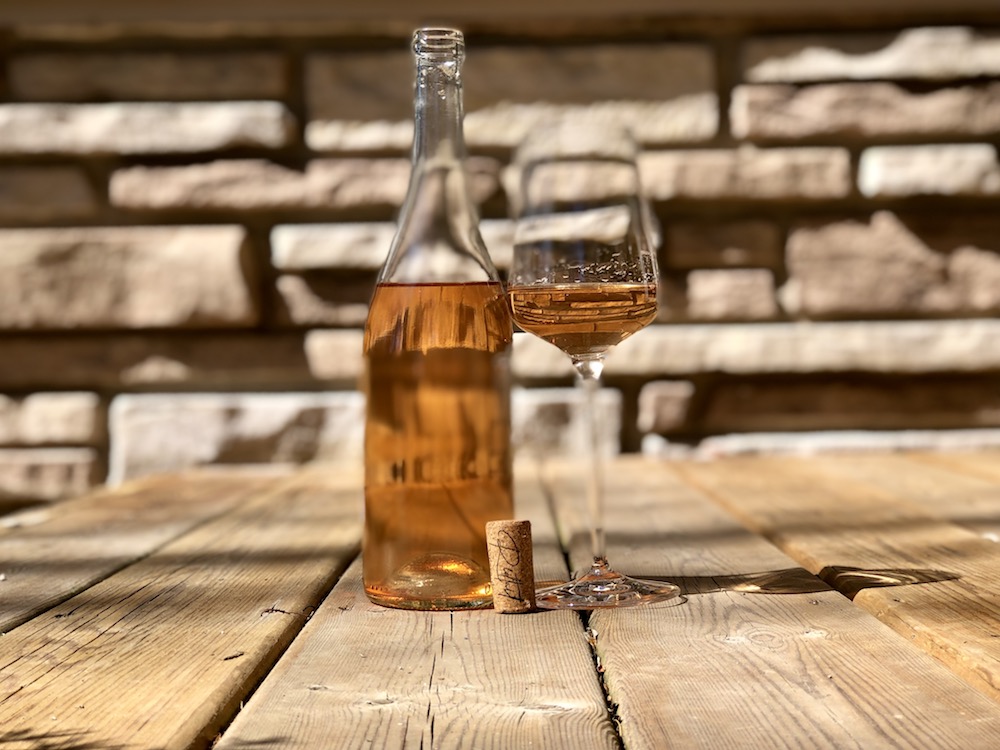
The two “natural” style wines are definitely where I push myself to do less. They are both smaller volumes that allow me to take greater risks in both the cellar and in sales. This is where I have the most fun as a winemaker. If I can add nearly nothing to a wine, make something that may technically not be flawless but get pretty darn close, and people think it tastes great — I get an extreme amount of pleasure from that. Will these wines be a large part of the portfolio? We are not sure, but there will always be a representation of this style of wine on the list.
The other wines of mine you are missing so far are the classic Pinot Noirs and Chardonnays. These take longer to produce and are still evolving in the barrel as we speak. Pinot is by far my favourite wine to produce. Of the wines I produced at Keint-He, I am most proud of the single-vineyard pinots I put in bottle. There is nothing like pulling Pinot out of a barrel and seeing something so light and delicate have so much depth and complexity.
We have some incredibly BIG plans that will make some large changes to our wine styles and philosophies as our vineyards are planted and our new facility is built. We are right now working in our friends’ cellars and vineyards, evolving as we go. I’m having a blast trying different things and finding some new techniques that may become a big part of who I am as a winemaker. The best part is that I’m young, the company is young, and we have a lot of growing up to do together so the possibilities are endless.

WIN: The Act Natural and Fieldhand wines were made available is a “County Collab” mix pack with Fieldbird and Hubbs Creek. I know you have a pretty good relationship with both Fieldbird (formerly sold through Keint-he) and Hubbs. Are these collabs going to become more frequent in the future, is this the way of the future, neighbours helping neighbours.
Baker: The idea for the County Collab came up in a very wine influenced conversation I was having with Ryan (Monkman, Fieldbird, above with Baker). It was just after 4 days of the lockdown and, to be honest, I wasn’t taking it very well. Ryan is like the brother I never had and I joke that (John) Battista (Hubbs Creek) is my adoptive father. I was worried about Redtail being so young with a minimal following; how would we support the business if we can’t reach people to show off these amazing wines we were working on. I was scared for Ryan’s business, FeildBird, for the same reason. What people in Ontario think hard cider is, is not what Ryan is creating and people need to know and taste it to change their minds. Meanwhile our adopted ‘County Dad’ was recovering from major surgery and wasn’t selling anything. These are three small businesses facing unprecedented times, so what could we do? I suggested that we sell wine together. Make a mix pack containing all of our wines and it would pool our resources together. ‘It takes a village’, right?
I had nearly forgotten about it thinking we would be up to our ears in red tape but Ryan called me a week later to tell me there was a way it could be done. The AGCO actually has a program just for this. We quickly came up with a theme, all three teams working together to set dates, gather photos, write promotional copy, and pull it all together. We thought if we sold 10 it would be a miracle and we did that the first day. We sold over 30 for the first one and people really seem to enjoy it. You get a good variety, try something you may not have tried if it wasn’t for the mix pack, and then you are invited for a virtual, interactive tasting with the winemakers.
We also give a gift with the pack. This next pack’s theme is ‘Small Batch’ and we have decided to provide the customer with everything they need to ferment their own, single bottle of cider at home. It has been amazing seeing these teams come together and work together so well. The reaction from the customers has been overwhelming.
Will we continue to do this? I would like to think so. We may take a pause so we can make the third even more incredible, but it has been such a great experience there is no reason to stop. I would encourage other wineries, cideries, breweries to try the same. We wouldn’t survive as small craft manufacturers alone and we require the support from our peers, especially during these times.
The Wines
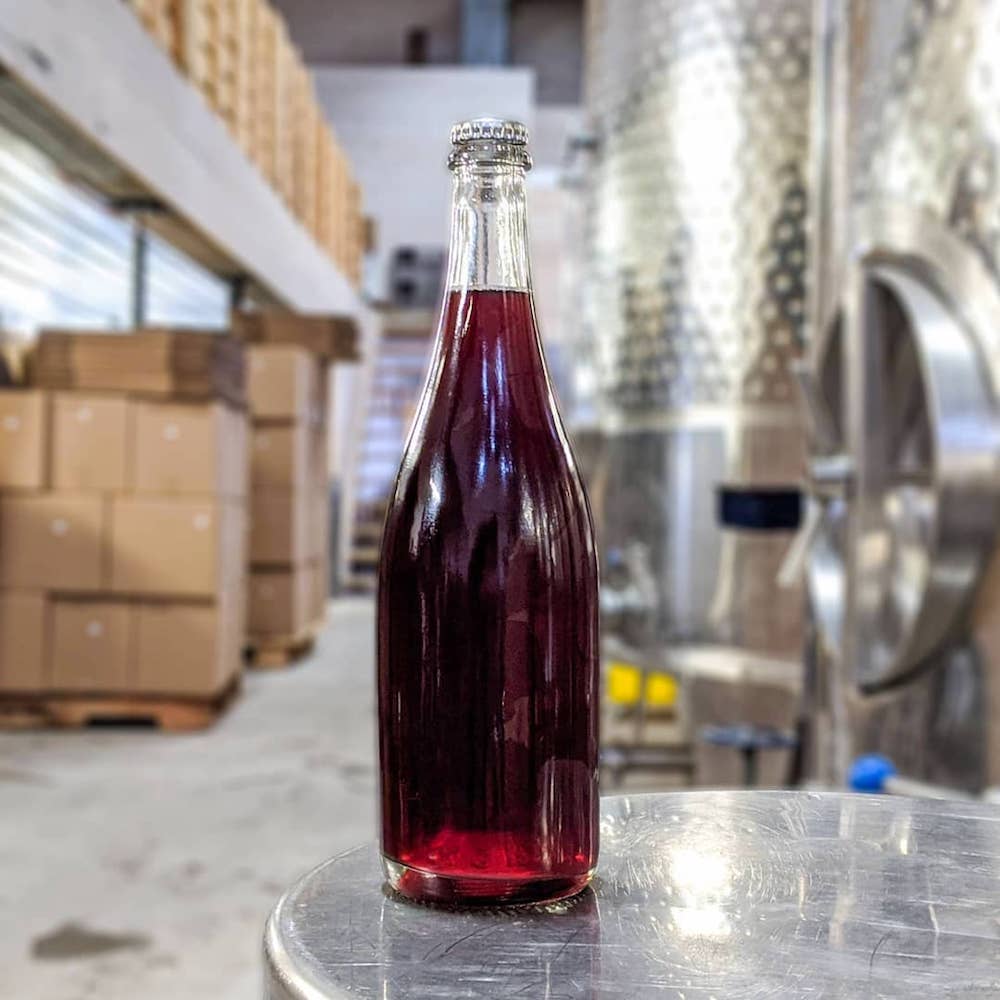
How to get them: Redtail offers free Ontario-wide delivery with a minimum purchase of $75. Pick-up at the winery is available on Mondays, Wednesdays, and Fridays from 12 pm to 4 pm. The online shop is currently set up to allow shipping within the province of Ontario. Email here. The retail facility opens this weekend for bottle purchases.
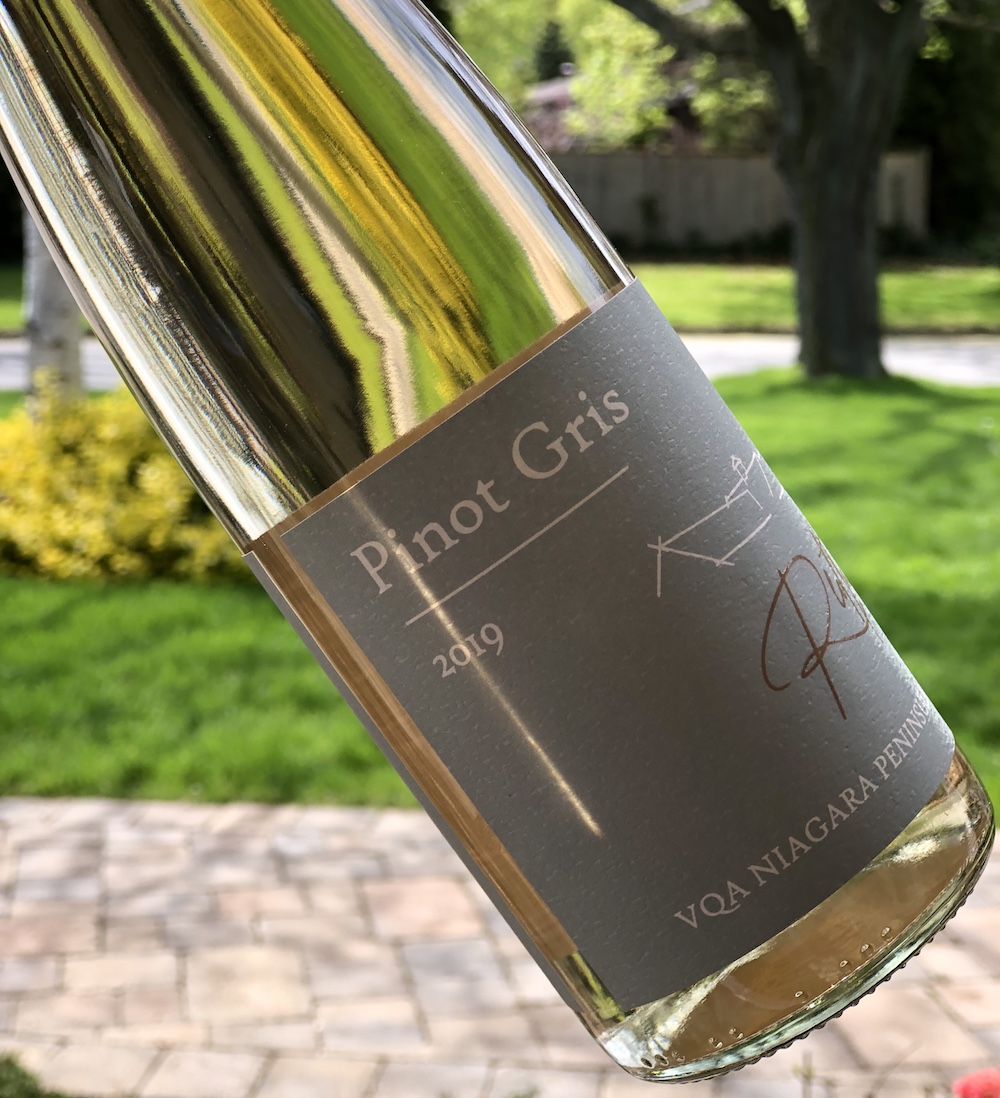
Redtail Vineyards Pinot Gris 2019, Niagara ($19, 89 points) — So, a lot going on here. Partially spontaneous fermentation, some skin contact, partially inoculated with two yeasts and barrel fermented in 500L French oak puncheons, 50% new wood. It was removed from barrel towards the end of fermentation (10 days) and finished in stainless steel. It shows a light copper colour in the glass with an appealing nose bin apple, guava, bright citrus, vanilla cream and floral notes. It has a creamy texture on the palate with rich, rounded orchard fruits, melon, lemon zest and a pinch of spice on a lifted finish. Delicious wine.
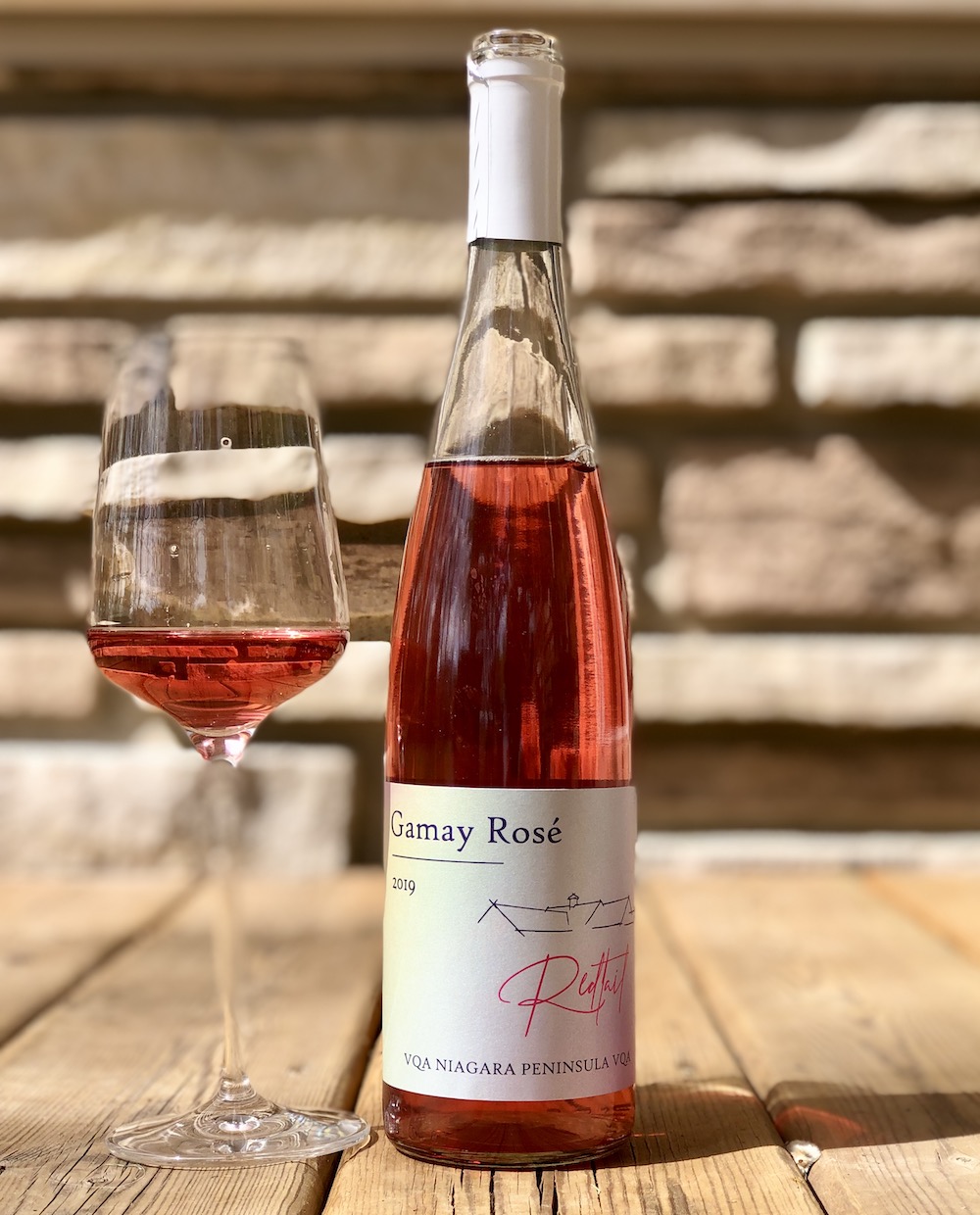
Redtail Gamay Rosé 2019, Niagara ($17 until Monday when it rises to $19, 88 points) — This Gamay rosé was fermented cold in stainless steel then blended with 7.6% Pinot Noir for colour, filtered, and bottled. It shows a pretty medium pink colour in the glass with aromas of confected red berries, plums and some bramble notes. It’s juicy on the palate with flavours of ripe cherries, raspberries, red plums and strawberries with a fresh, dry impression on the finish. It’s recommended you serve this crushable rosé from a cooler packed with ice at your favourite secret beach.
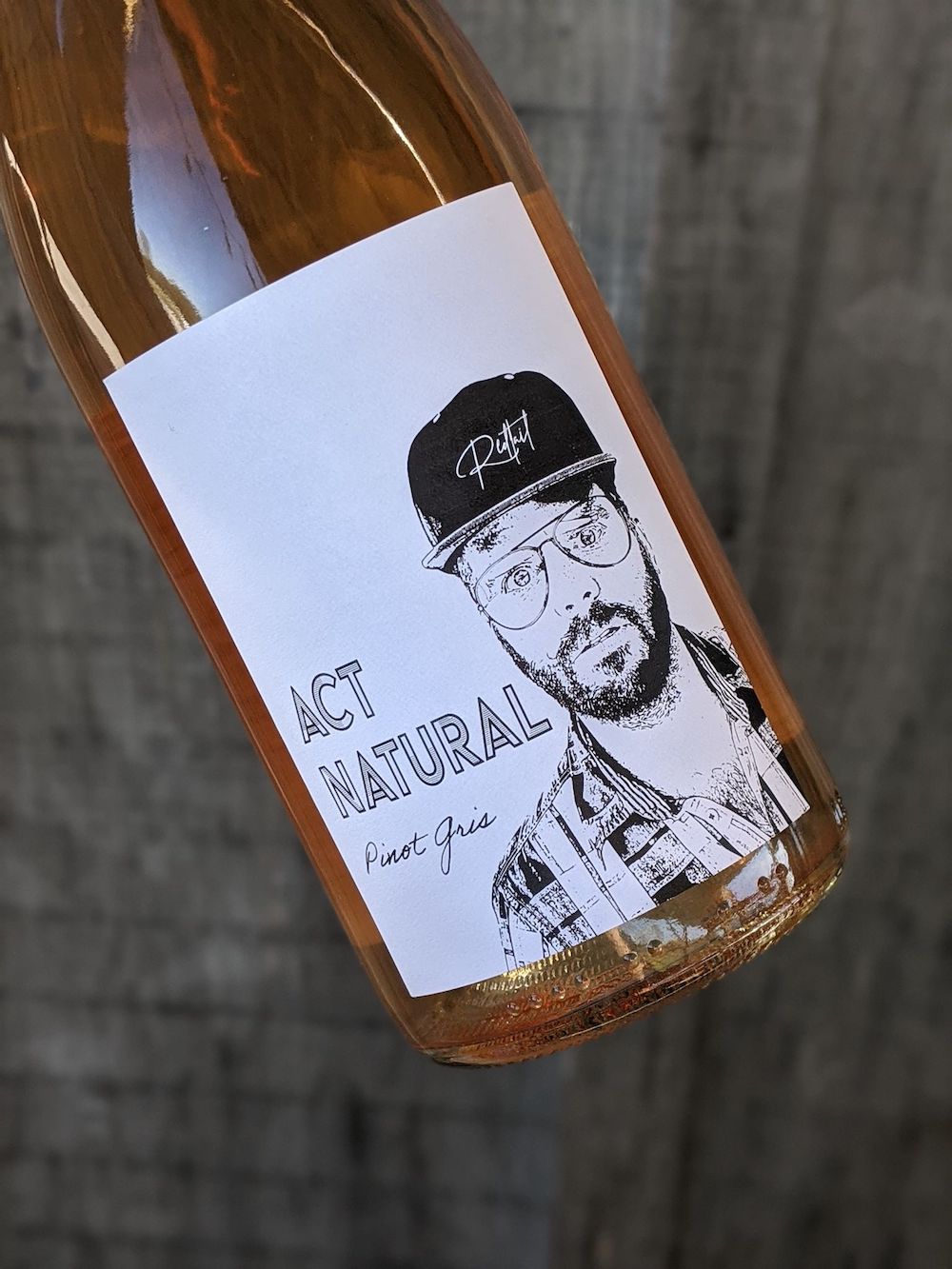
Redtail Act Natural Pinot Gris 2019, Beamsville Bench, Niagara ($20, 91 points) — So, two days on skins, then pressed and aged in stainless steel. Full malolactic fermentation. Unfined and unfiltered. The only addition to this wine was 15 ppm sulphur added before transport from Niagara to PEC. Not quite an orange wine, not quite natural. Baker has this to say about this quirky wine: “I have this perpetual debate with myself. ‘What is a Natural Wine?’ To me it starts in the vineyard. Grapes are farmed making it UnNatural, but organic and sustainable practices get you close. These grapes were farmed sustainably so that’s a win!! The winemaking should be hands off. Nothing should be added. The grapes spent two days on the skins, moved only when it had to. I did add sulphur twice to keep her safe but $#!t happens. Nothing else added. Is it a Natural Wine? I don’t know, but this wine Acts Natural!” Fans of natural wines will like this, fans of orange wine will like this and fans of Pinot Gris will like this, so why quibble with definitions of what it is? It has an interesting nose of nectarine, melon, fuzzy peach, citrus pith and some funky/earthiness. It’s super dry but loaded with extracted and juicy orchard fruits, nectarine, subtle tannins, touch of funk and rock and roll, honeydew melon with a crisp and zesty finish. Just try and act natural when you sip this.
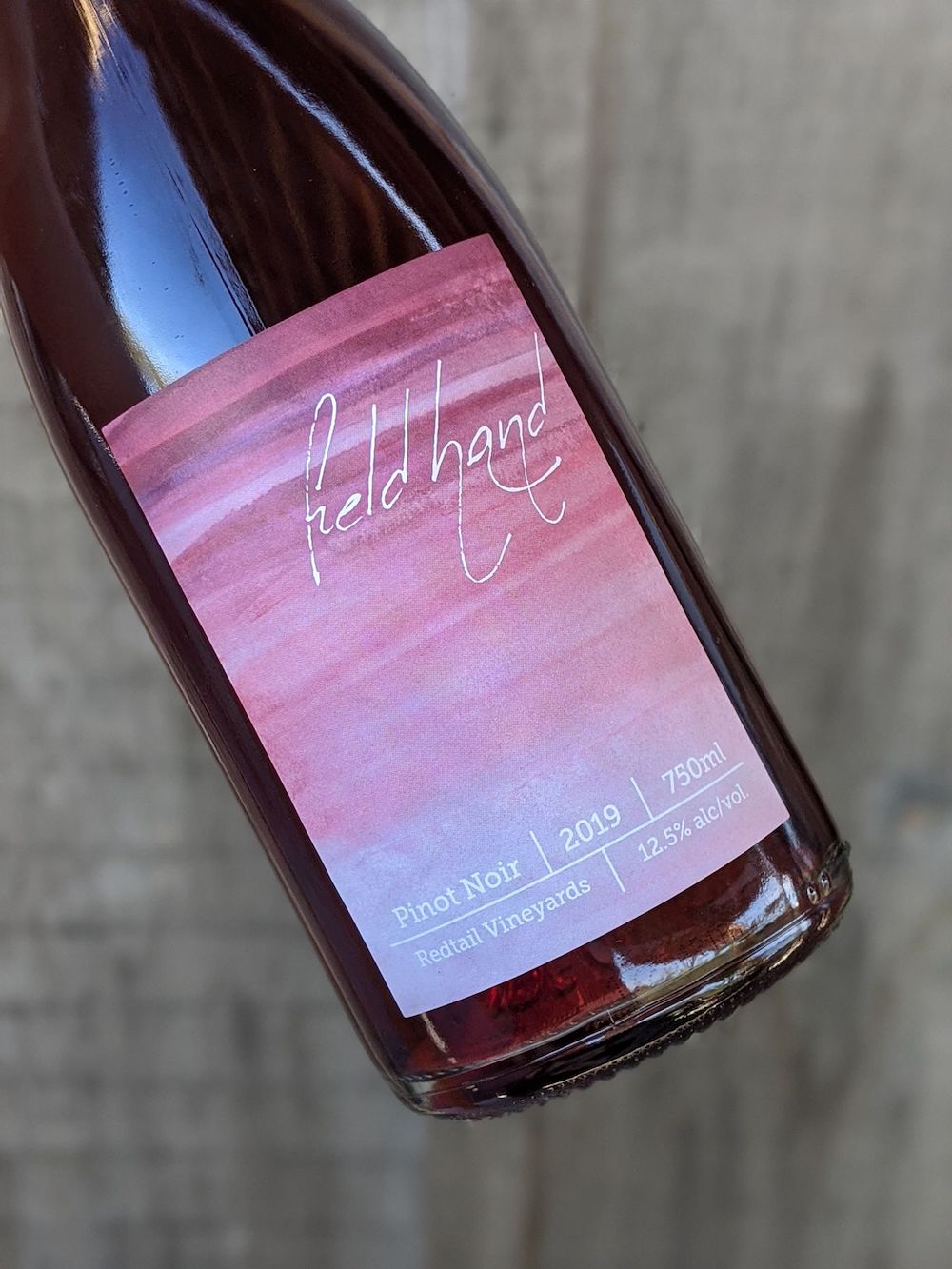
Redtail Fieldhand Pinot Noir 2019, Beamsville Bench, Niagara ($24, released at the end of June, 92 points) — Wild ferment with zero additions throughout fermentation and ageing. No oak contact, aged exclusively in stainless steel. Bottled early in repurposed sparkling bottles to preserve freshness and vibrancy. Natural? You decide. The nose is all about pure fresh cherries, crunchy raspberries, violets and minerals. It’s bright and zippy on the palate and loaded with cherry/raspberry fruit, light tannins, red currants and subtle meaty funk through a tangy, finessed finish. Pure glou-glou wine to enjoy around a summer bonfire, on a dock or poolside served slightly chilled, of course


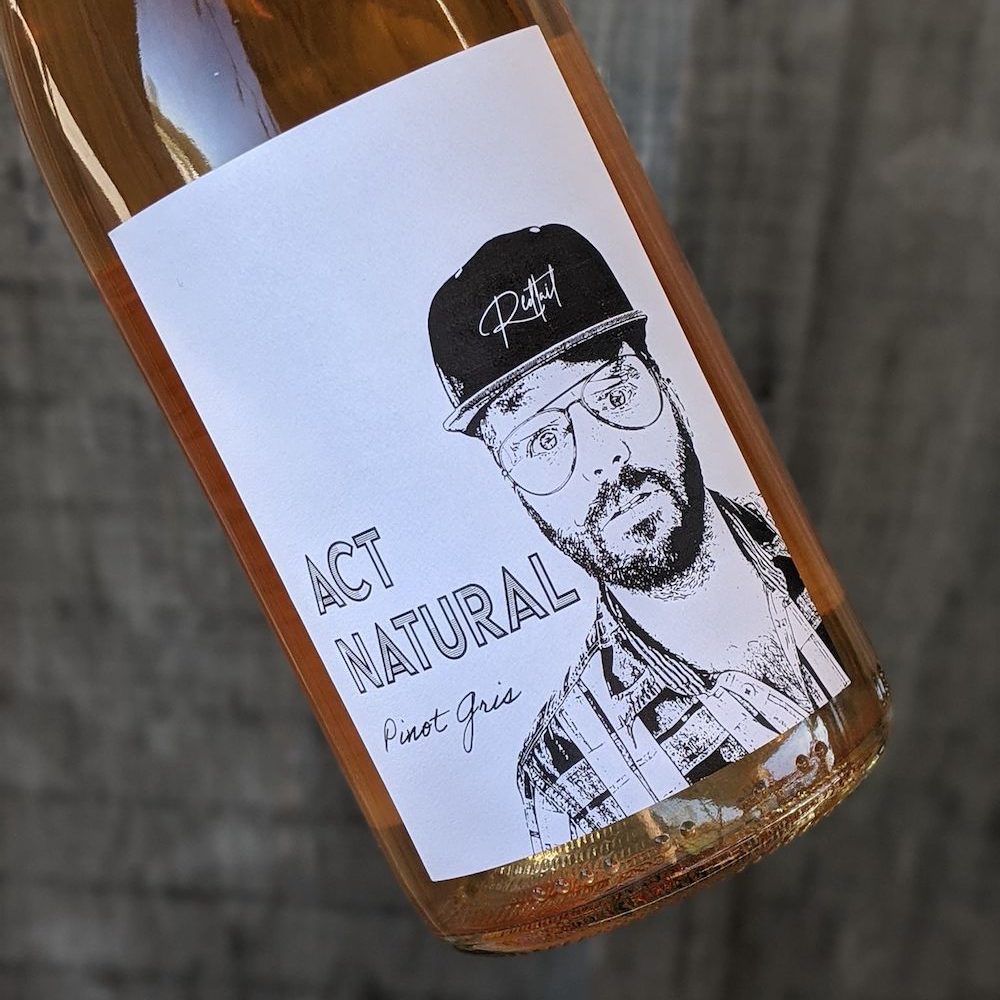




Comment here